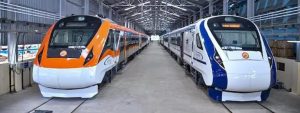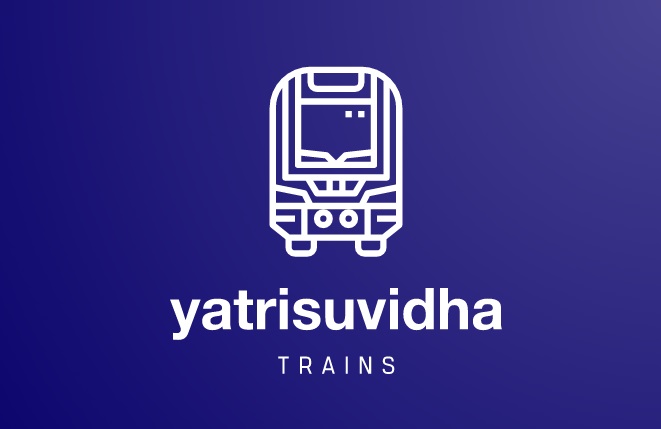
B1 and BE1 Coaches
Indian Railways, one of the world’s largest rail networks, continuously evolves to meet passenger demands for comfort, safety, and efficiency. Among the different types of coaches Indian Railways offers, the B1 and BE1 coaches are well-known for their accommodations in express trains. Although they may appear similar, each serves specific purposes and offers unique amenities and features. In this article, we’ll dive into the intricacies of B1 and BE1 coaches, examining their layouts, facilities, routes, and how they enhance the travel experience.
- Overview of B1 and BE1 Coaches
Indian Railways categorizes train coaches to optimize seating and sleeping arrangements, speed, and comfort levels. The B1 and BE1 coaches are part of the 3-Tier Air-Conditioned (3A) category, commonly found in express trains like the Rajdhani, Shatabdi, and Duronto. Here’s a quick overview:
B1 Coach: Typically a standard AC 3-tier coach, often positioned closer to the engine or pantry car, depending on the train configuration. This coach offers air-conditioned comfort with three-tier berths arranged for sleeper accommodation.
BE1 Coach: Similar to B1 but often used as an additional 3-tier AC coach during high-demand seasons or to meet increased capacity needs. BE1 may differ slightly in layout, and occasionally these coaches are introduced as temporary attachments.
Both coach types cater to a large number of passengers, especially in long-distance travel, providing a comfortable journey at an economical rate compared to 2-tier AC or 1st Class AC.
- Coach Layout and Seat Arrangement
B1 Coach Layout
The B1 coach usually follows a standardized layout typical of Indian Railways’ AC 3-tier coaches. Here’s a look at the common features:
Sleeping Berths: Arranged in a 3-tier configuration—upper (UB), middle (MB), and lower (LB) berths—on each side.
Total Capacity: B1 coaches generally have 64–72 berths, with 8 bays of 6 seats each.
Seating Plan: Seats are arranged in groups with two side seats (side upper and side lower) running parallel to the train’s movement.
Windows: Large, sealed windows with tinted glass for heat reduction and emergency exit options.
BE1 Coach Layout
The BE1 coach is an extension of the 3A category, serving as an additional or spare AC 3-tier coach. The layout generally mirrors that of B1 but may have slight variations:
Extended Berths: Additional seating capacity, sometimes achieving up to 80 seats due to denser arrangements.
Flexible Usage: Often attached to a train based on demand fluctuations. During festivals, peak seasons, or special events, BE1 helps accommodate extra passengers.
- Amenities in B1 and BE1 Coaches
Both B1 and BE1 coaches aim to offer a comfortable journey in terms of facilities and climate control. Here’s a breakdown of their amenities:
Climate Control
Being part of the air-conditioned class, B1 and BE1 coaches offer temperature-controlled environments. The air conditioning system is centrally controlled, maintaining a comfortable temperature throughout the year.
Seating and Sleeping Arrangements
The 3-tier system in B1 and BE1 allows passengers the flexibility to sit during the day and convert the berths into sleepers at night. Fresh linens, pillows, and blankets are provided to each passenger, ensuring a hygienic and cozy sleeping arrangement.
Charging Points and Lighting
These coaches are equipped with individual charging points and reading lights. Each bay has multiple USB or 3-pin sockets, allowing passengers to charge their devices.
Toilets and Hygiene Facilities
B1 and BE1 coaches come with both Western and Indian-style toilets. The cleanliness of these restrooms is maintained through regular checks, and some modern coaches are equipped with bio-toilets, which help reduce environmental impact.
Safety Features
Safety is a key priority for Indian Railways. B1 and BE1 coaches are designed with emergency features, such as fire extinguishers, emergency hammers, and an easy-access emergency alarm chain. Staff regularly inspect and maintain these features.
- Routes and Trains Using B1 and BE1 Coaches
B1 and BE1 coaches are prevalent in several prestigious trains across India. Here are some common routes and trains that employ these coaches:
B1 Coach Routes
Rajdhani Express Trains:
Delhi to Mumbai (12951/52): This route connects two major metropolitan cities, and B1 coaches are integral for AC 3-tier travel.
Delhi to Kolkata (12301/02): A popular long-distance train linking the capital with the eastern metropolitan city of Kolkata.
Shatabdi Express Trains:
Delhi to Amritsar (12013/14): A day-time intercity train that uses B1 coaches, providing a comfortable option for travelers in the 3A category.
Mumbai to Ahmedabad (12009/10): A frequent route, with B1 coaches included for a cost-effective yet comfortable journey.
Duronto Express Trains:
Howrah to Mumbai (12262/61): Known for minimal stops, Duronto trains include B1 coaches for AC 3-tier passengers.
BE1 Coach Routes
Festive and Special Trains: BE1 coaches are often attached to special trains during Diwali, Holi, and other peak travel times to accommodate increased demand. Routes such as Mumbai to Patna, Delhi to Lucknow, and Chennai to Bangalore frequently use BE1 coaches as additional carriages.
Popular Long-Distance Routes:
Delhi to Patna (12391/92): This route is often in high demand, especially around festival seasons, where BE1 coaches are a valuable addition.
Mumbai to Varanasi (11093/94): A long route with consistent high demand where BE1 coaches serve as auxiliary carriages to provide additional berths.
- Difference between B1 and BE1 Coaches
Though B1 and BE1 coaches both belong to the AC 3-tier category, some notable differences distinguish them:
Frequency and Use: B1 is a regular coach in many trains, while BE1 serves as an additional or supplementary coach.
Position in Train: B1 coaches are typically placed closer to the middle of the train or near pantry cars. BE1 may be attached at the end of the train as it’s an add-on.
Capacity Variations: BE1 may have a slightly denser seating arrangement than B1 to accommodate extra passengers.
- Ticket Pricing and Booking
Pricing for B1 and BE1 coaches falls under the 3A fare category, offering a middle-ground between sleeper class and 2A AC class. The fare structure varies based on factors such as route, demand, and peak season:
B1 Coach Fares: Typically fixed as per the AC 3-tier category.
BE1 Coach Fares: Since BE1 is often introduced to meet seasonal demand, fares might reflect slightly increased pricing during peak travel seasons.
Booking for these coaches can be done through the IRCTC (Indian Railway Catering and Tourism Corporation) platform or at railway reservation counters. Availability and demand fluctuate, so early booking is recommended, especially during holidays.
- Upcoming Upgrades and Features
Indian Railways is actively investing in modernizing its coaches, including B1 and BE1:
LED Lighting: Newer B1 and BE1 coaches now feature energy-efficient LED lighting, reducing power consumption and improving illumination.
Improved Air Conditioning: With upgraded AC units, newer models of B1 and BE1 coaches provide a more stable temperature with lower noise.
Bio-Toilets: In line with environmental commitments, most B1 and BE1 coaches are now outfitted with bio-toilets, reducing waste discharge on tracks.
- Passenger Experience and Feedback
Passenger feedback often highlights the comfort and affordability of B1 and BE1 coaches. Travelers appreciate the temperature-controlled environment, courteous staff, and the option of a reasonably priced sleeper. Some suggestions for improvement include enhanced restroom cleanliness and the provision of food options.
B1 and BE1 coaches in Indian Railways’ AC 3-tier category offer an efficient and comfortable way to travel long distances across India. Their balance of affordability and amenities makes them a popular choice for a wide range of passengers. Whether you’re a frequent traveler or planning a special journey, understanding these coach types can help you choose the best option for a comfortable and memorable experience. Indian Railways continues to improve these coaches, ensuring they remain a cornerstone of long-distance travel across the country.

Leave a Reply